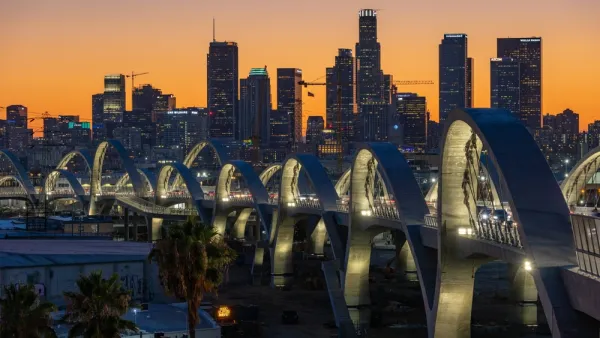City leaders from the Mayor on down recognize that infill development is necessary to create a more livable Los Angeles. So why does the public sector allow so many obstacles to stand in the way of small-scale development?
The constraints of existing infrastructure and regulation mean that the bulk of L.A.’s future growth will not come from large-scale redevelopment projects, but rather, from “more targeted development of a smaller scope and scale,” says Casey Lynch.
However, a number of factors conspire to limit the opportunities for such projects to proceed. “The most challenging demands stem from the opacity of the entitlements process, the cost of doing business, and the response times of city agencies,” argues Lynch, co-founder of Los Angeles development firm LocalConstruct. Smaller developers lack the resources to shoulder these burdens, rendering their projects costly, inefficient, and at times, infeasible.
“[I]n light of the potential for small scale development to reshape LA for the better, the public sector must work harder to alleviate the bureaucracy and costs that stifle so many promising projects,” says Lynch, who addresses some of the ways to remove these obstacles.
With two of the improvements he suggests - CEQA reform and the consolidation of City Planning and LADBS - building momentum, the prognosis for small developers may be improving already.
Thanks to Melody Wu
FULL STORY: PROTEST> PEE-WEE'S PLEA

National Parks Layoffs Will Cause Communities to Lose Billions
Thousands of essential park workers were laid off this week, just before the busy spring break season.

Retro-silient?: America’s First “Eco-burb,” The Woodlands Turns 50
A master-planned community north of Houston offers lessons on green infrastructure and resilient design, but falls short of its founder’s lofty affordability and walkability goals.

Delivering for America Plan Will Downgrade Mail Service in at Least 49.5 Percent of Zip Codes
Republican and Democrat lawmakers criticize the plan for its disproportionate negative impact on rural communities.

Test News Post 1
This is a summary

Test News Headline 46
Test for the image on the front page.

Balancing Bombs and Butterflies: How the National Guard Protects a Rare Species
The National Guard at Fort Indiantown Gap uses GIS technology and land management strategies to balance military training with conservation efforts, ensuring the survival of the rare eastern regal fritillary butterfly.
Urban Design for Planners 1: Software Tools
This six-course series explores essential urban design concepts using open source software and equips planners with the tools they need to participate fully in the urban design process.
Planning for Universal Design
Learn the tools for implementing Universal Design in planning regulations.
EMC Planning Group, Inc.
Planetizen
Planetizen
Mpact (formerly Rail~Volution)
Great Falls Development Authority, Inc.
HUDs Office of Policy Development and Research
NYU Wagner Graduate School of Public Service





























